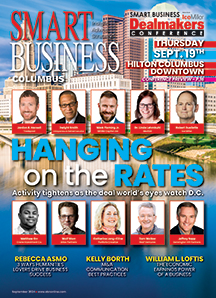
There are market cycles in every industry, and insurance is no exception. But you don’t have to just take what the market brings you. Jonathan Theders, president of Clark-Theders Insurance Agency Inc., says the market cycle is only half of the pricing equation.
“You can’t control the market itself — storms are going to occur, natural disasters are going to cause pricing to change,” Theders says. “You have to focus on what you can do to differentiate your business and make yourself stand out.”
Smart Business spoke with Theders about how to position your business for success in the hardening insurance market.
How is the insurance market cycle determined?
There are two types of markets — soft and hard. In a soft market, premiums are stable or decreasing, and insurance is readily available. There is a lot of competition.
A hard market is the converse to that. Pricing goes up, it’s harder to find coverage, there are fewer competitors in the marketplace and there is an increase in claim activity across the board.
Economic downturns, natural disasters, and supply and demand all determine whether a market will be hard or soft.
Pricing cycles differ across the U.S. They are based geographically and also by type of coverage. For example, cyber liability used to be very expensive, but it’s gotten more competitive because there is more supply out there. You’re adding more competitors and it’s driving down the cost. You can see the converse of that in the workers’ compensation arena. You’re seeing higher than normal claim frequency. The result is increased pricing in that area across the board.
How can businesses control these costs?
Instituting safety prevention programs, managing your claims efficiently and employing various cost containment strategies can control these price fluctuations.
Look for ways to show how you stand out from the rest of your industry. You do that with a consultative approach. That involves not just looking at how you buy insurance, but also spending time identifying exposures you have to loss, finding solutions, and improving your disaster response and contingency plan.
Focus on building a culture of safety, constantly seeking continuous improvement. If you approach it like long-term cost control instead of just riding these cycles, you’re always in a better position to secure your coverage at the best price. Don’t let the market cycle dictate you. Dictate your own cycle based on what you’re doing.
Why is it important to dictate your own cycle?
When pricing decreases and you don’t have to work hard to get insurance, businesses are often unwilling to spend resources on risk management and loss control. They see insurance costs dropping, so they don’t understand the need to spend resources on something that is already under control. But that reduction in price during a soft market is setting that business up for a huge shock when the market changes, because it is not doing what it takes to differentiate and increase its risk profile.
Your risk profile encompasses your specific industry, issues, your building and the way it’s protected or not, and your policies and procedures. If you focus on risk profile improvement, you improve the way you look to an underwriter.
Then, take it one more step: Communicate all the things you’re doing. That guarantees a differentiation in the marketplace. A lot of companies do great things safety-wise. Very few are good at communicating those things to their insurance carrier. They may be doing great things already, but nobody knows about them.
Jonathan Theders is the president of Clark-Theders Insurance Agency Inc. Reach him at (513) 779-2800 or [email protected].
Insights Business Insurance is brought to you by Clark-Theders Insurance Agency Inc.

